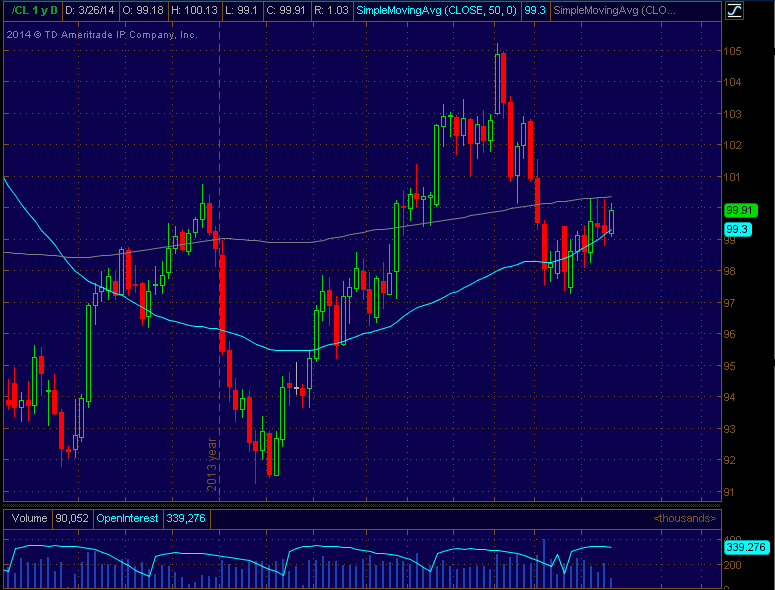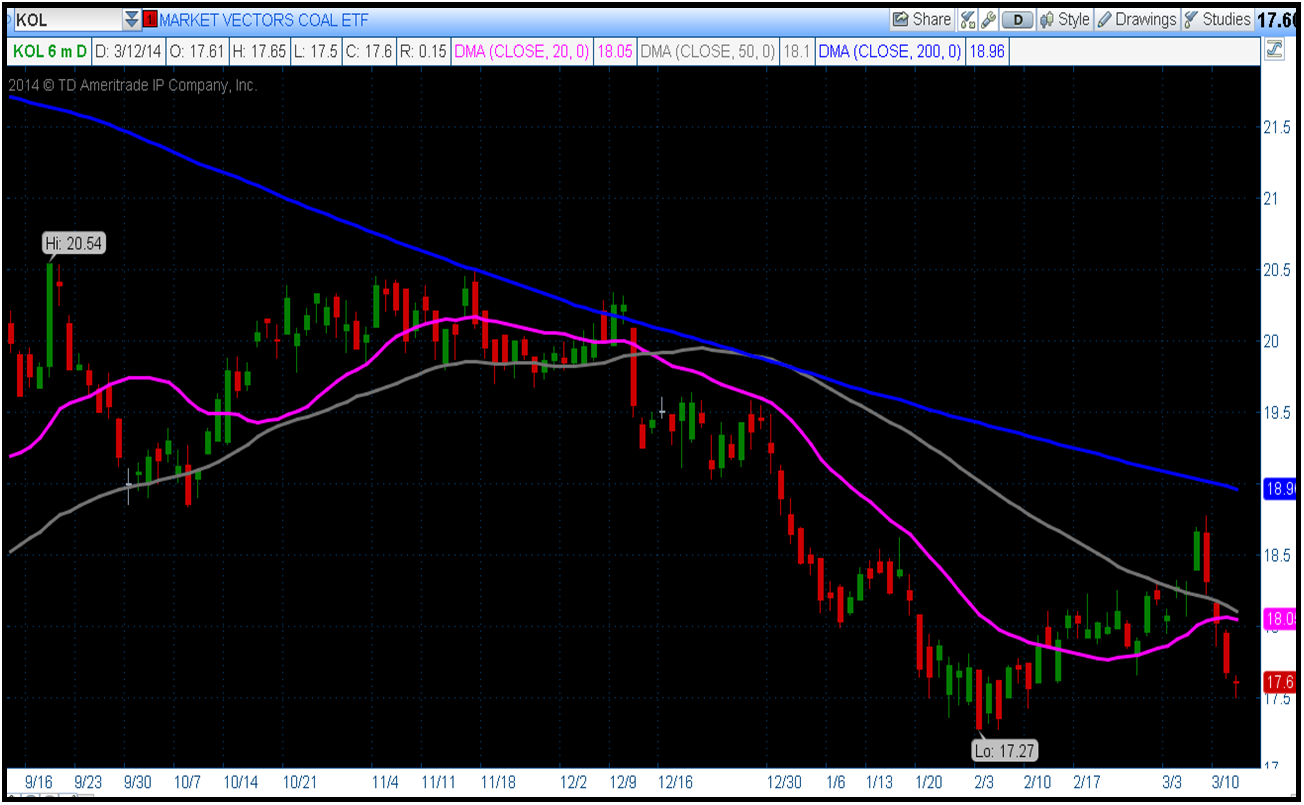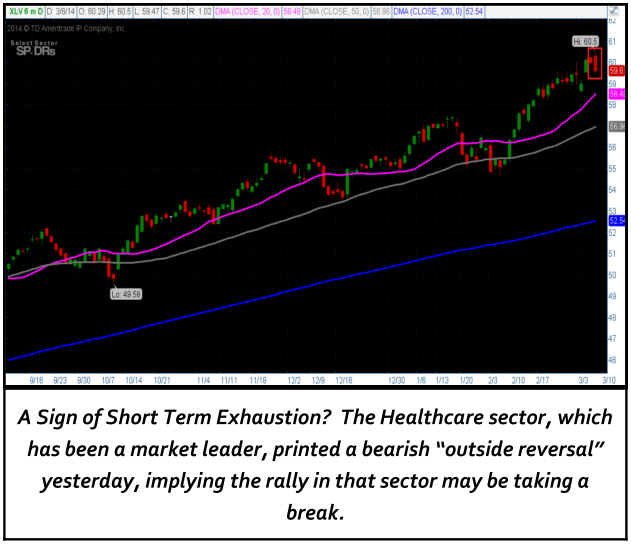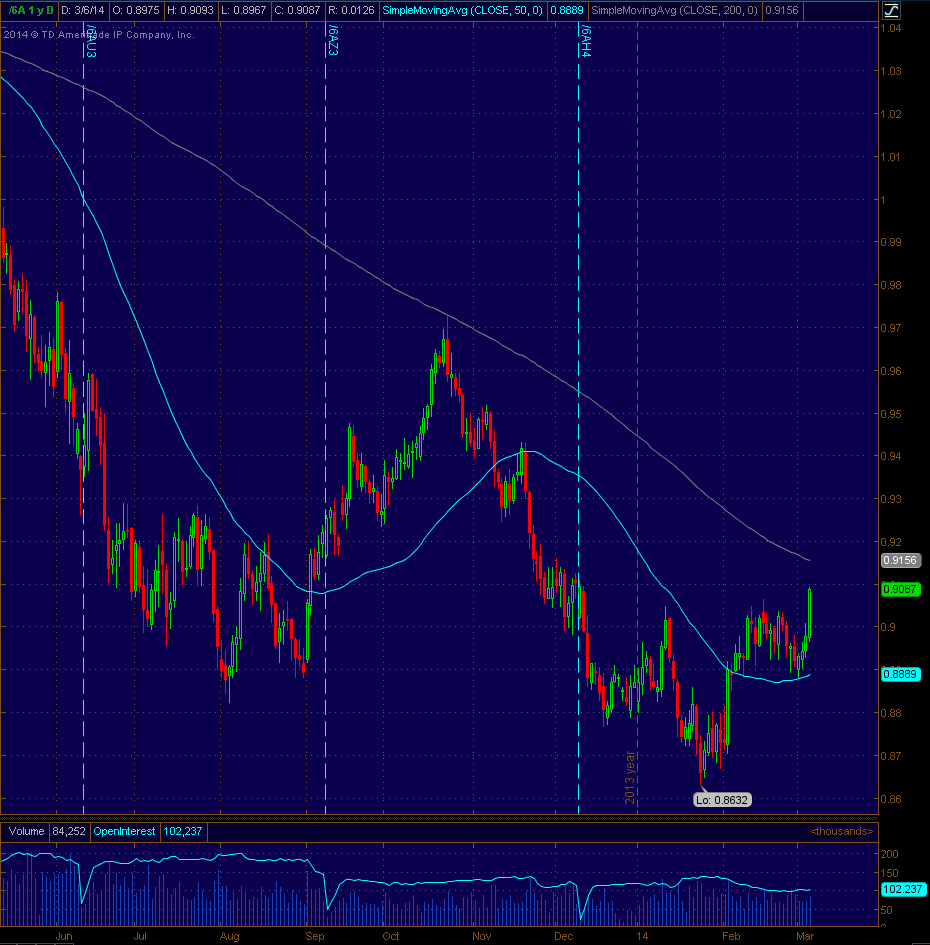The Economy: A Look Back and What’s Ahead
Last Week
Economic data last week importantly confirmed that the weakness we saw in December/January was weather-related and temporary. The decent March PMIs and jobs report likely put to bed any major concerns about the U.S. economy losing steam. But, given the trend of February data, last week’s data merely confirmed what was widely assumed, so that’s why we didn’t see the markets react in a more positive fashion.
Internationally, it was a different story, though. The Chinese March PMIs (both manufacturing and service) weren’t as bad as feared, and helped (for now) alleviate some worries about the pace of growth in China. Importantly, the official March manufacturing PMI held above 50 (50.3), while service sector PMI actually beat estimates (51. 9 vs (E) 51.0).
In Europe, the ECB meeting was the big event last week, as Mario Draghi did a good job convincing markets that QE in the EU is a real possibility. That potential ECB easing, combined with March PMIs that showed continued improvement in the EU economy, helped upgrade the outlook in Europe.
Both international markets reacted positively to the better-than-feared/-expected news, and resulted in decent outperformance of international vs. U.S. last week.
The big number domestically was Friday’s jobs report, which obviously is getting a lot of attention given the Friday sell-off. First, the jobs number was fine. It was a slight miss vs expectations and the “whisper number” (192K vs. (E) 206K and whisper of 200K-ish). But, there were positive revisions of more than 30K to Jan/Feb. Most importantly, the jobs numbers confirmed that the dip in economic activity in Dec/Jan was mostly weather-related, and that 3% annual GDP growth in 2014 is still a reasonable expectation.
The one thing the market didn’t like about the jobs report, though, was the salary/wage data. Average hourly earnings declined by 0.01 to $24.30, while year-over-year wages grew just 2.1% vs. (E) 2.3%.
That’s important for two reasons. First, higher wages obviously reflect more economic activity. That’s because, as firms get busier and the demand for employees goes up, the “cost” of those employees (or what you have to pay them) goes up as well because the entire industry sees more activity. Those employees, who are making more money, then go spend it in the economy, creating a virtuous cycle.
Second, we currently have very low inflation (statistically) here in the U.S., and as a result dis-inflation/deflation remains a threat (although not nearly as big of a threat as in Europe). But, it’s in everyone’s interest to see inflation rise from its current levels, as it would be a positive for the economy. But, without wages increasing, it’s very unlikely that we’ll see inflation start to move higher in the immediate term.
The stagnation in wages is something to watch, but it didn’t “cause” Friday’s sell-off, and I think this is more of a situation where the analysts were looking for an excuse for the “dovish” response to the number. During the coming months, if we start to see a trend of further stagnation in wages, then it may be a legitimate problem, but one number doesn’t make a trend.
So, bottom line is the jobs number and economic data were “fine” last week, and largely the economy is performing as expected (slowly improving growth).
This Week
It’s a quiet week on the data front, with the most important data coming from China. Trade balance data comes Wednesday night and CPI/PPI come Thursday night, and while inflation isn’t the threat it once was in China, it’s still important that inflation stays contained, as the entire market expects Chinese authorities and the PBOC to remain supportive of growth. If inflation runs too hot, they may not be willing to be as accommodative as the market currently expects, so the risks into the number (while small) are to the downside.
Domestically there’s not a lot on the calendar. FOMC minutes from the March meeting are released Wednesday, but they shouldn’t contain any surprises given the March meeting was one with the Chair’s press conference. Analysts will look into the minutes for “hawkish” or “dovish” leanings, but Fed policy expectations remain pretty well- known—they are going to continue tapering QE at $10 billion per meeting, and the first rate hikes will come in mid-2015 (April to July). And, only a material change in the economic outlook will change that policy expectation.
Weekly claims will also be watched to see if the downtrend in the four-week moving average will resume (and, in doing so, imply incremental improvement in the labor market).
In Europe it’s also quiet, as the Bank of England policy meeting (Thursday) is the highlight, and there’s no change expected to policy (it should be a relative non-event). Bottom line is this is a quiet week and shouldn’t alter anyone’s outlook on the global or U.S. growth.




